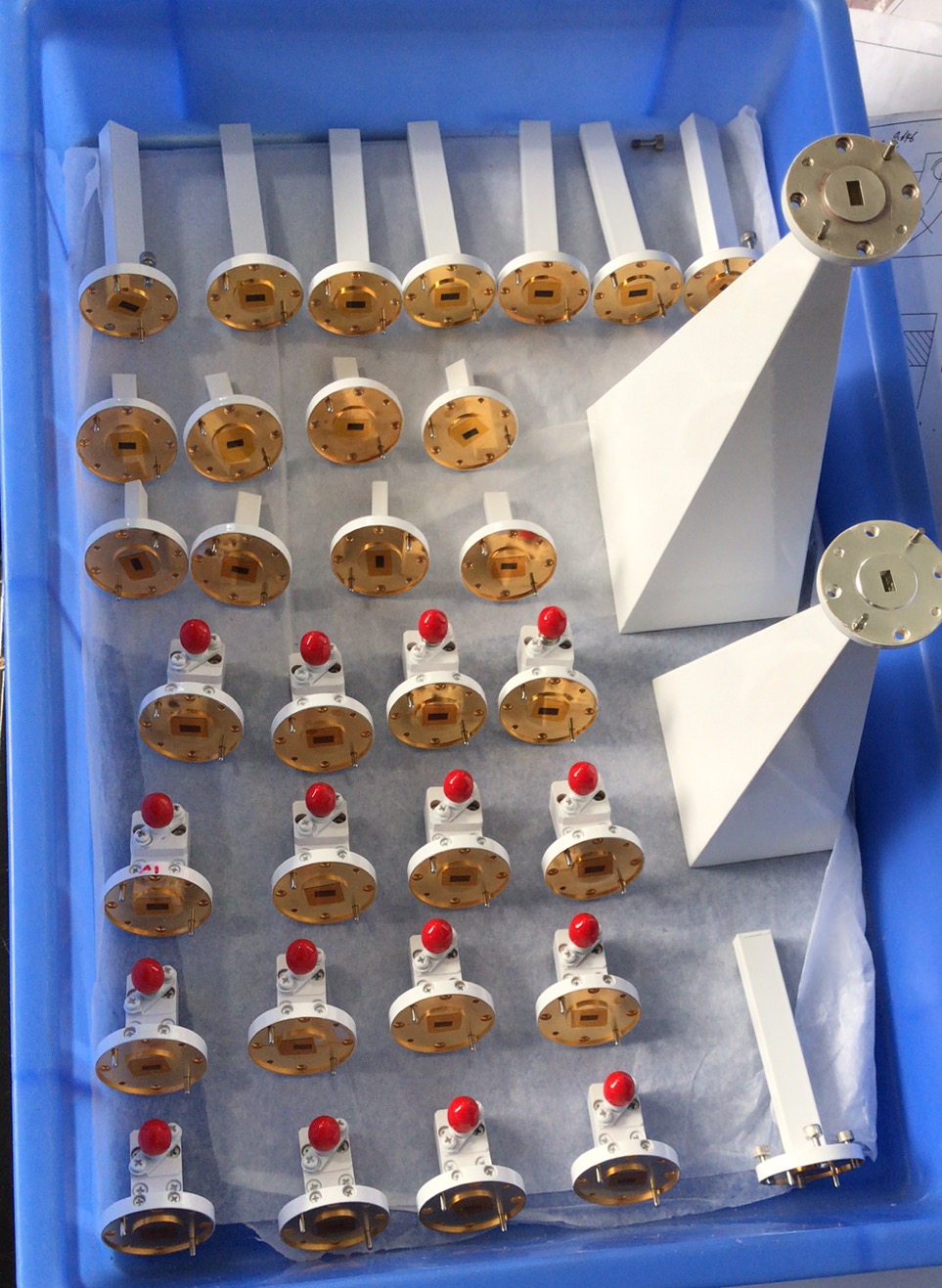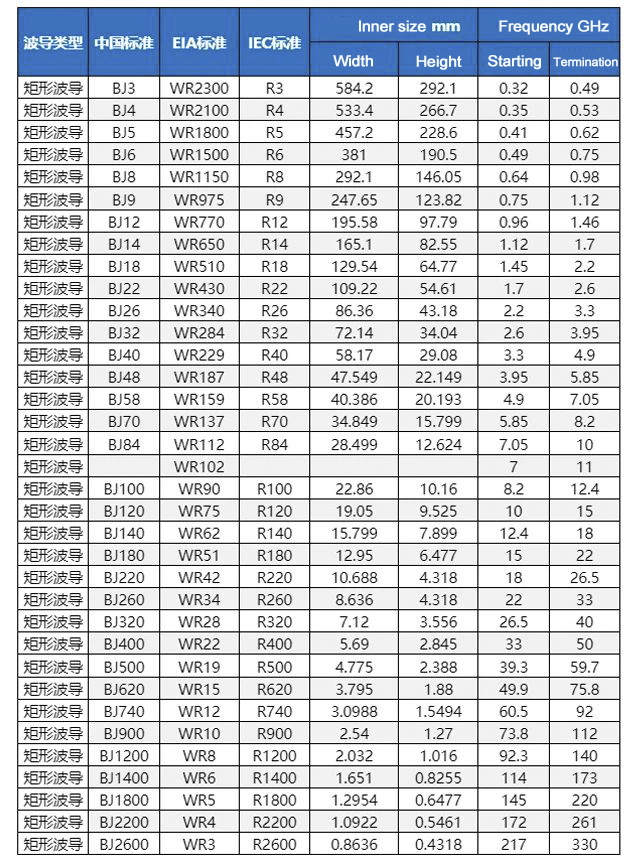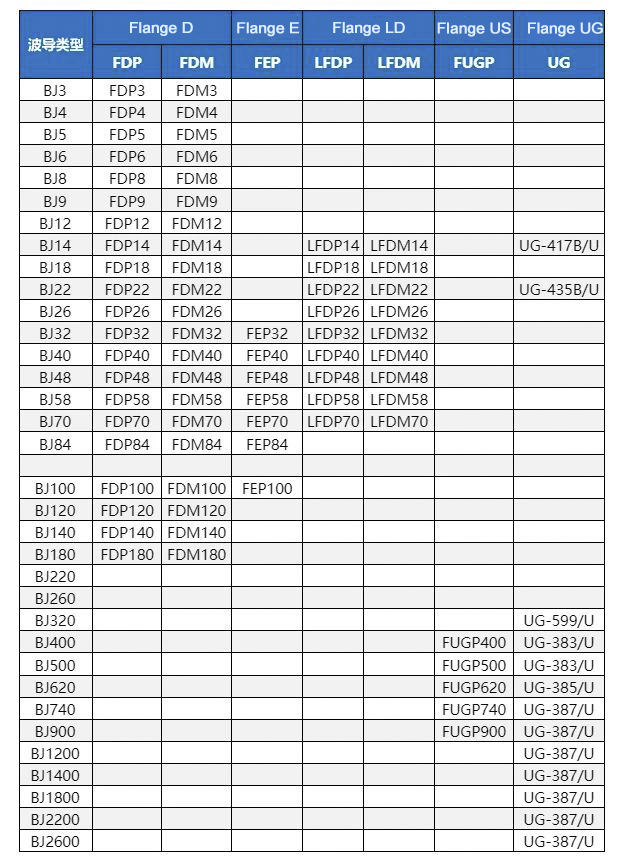In the field of RF and microwave signal transmission, in addition to wireless signal transmission, most of them require transmission lines for signal conduction, with coaxial lines and waveguides widely used to transmit microwave RF energy.
Waveguide transmission lines have the advantages of low conductor and dielectric losses, large power capacity, no radiation losses, simple structure, and easy manufacturing. The commonly used waveguides include rectangular, circular, single ridged, double ridged, and elliptical. Currently, the most widely used waveguides are rectangular waveguides.
In the application process of waveguide devices, multiple devices often need to be connected correspondingly, and the connection between adjacent waveguide devices is often achieved through the corresponding connection of flanges.
Just like RF coaxial connectors, conventional waveguides and flanges are also globally standardized. Through the table below, you can query the corresponding standard names and sizes of various rectangular waveguides.
Application of Waveguide Coaxial Converter
Similarly, coaxial lines are also the most commonly used transmission lines in microwave and radio frequency engineering, with broadband characteristics that can operate from direct current to millimeter wave band, or even higher. Coaxial transmission lines have been widely used in both microwave systems and microwave components.
 There are significant differences in size, material, and transmission characteristics between coaxial and waveguide transmission lines. However, due to their wide range of applications, RF engineers often encounter situations where the two transmission lines need to be interconnected, requiring coaxial waveguide converters.
There are significant differences in size, material, and transmission characteristics between coaxial and waveguide transmission lines. However, due to their wide range of applications, RF engineers often encounter situations where the two transmission lines need to be interconnected, requiring coaxial waveguide converters.
Coaxial waveguide converters are essential devices in microwave equipment, microwave measurement, microwave systems, and engineering. Their conversion methods mainly include small hole coupling, probe coupling, fin line transition conversion, and ridge waveguide conversion; Coaxial probe coupling is a widely used conversion method among them.
The waveguide coaxial converter mainly consists of a first converter, a second converter, and a flange, with the three components connected in sequence. There are usually orthogonal 90 ° waveguide coaxial converters and terminated 180 ° waveguide coaxial converters. The coaxial waveguide converter has the characteristics of wide frequency band, low insertion loss, and small standing wave. The bandwidth of coaxial line and waveguide is relatively wide when transmitting respectively, and the bandwidth after connecting depends on the matching of characteristic impedance of coaxial waveguide.
Coaxial waveguide conversion is commonly used in many microwave systems, such as antennas, transmitters, receivers, and carrier terminal devices, which can be widely used in satellite communication, radar, wireless communication, industrial microwave, microwave testing and measurement systems, medical microwave systems, etc.
Post time: May-17-2023






